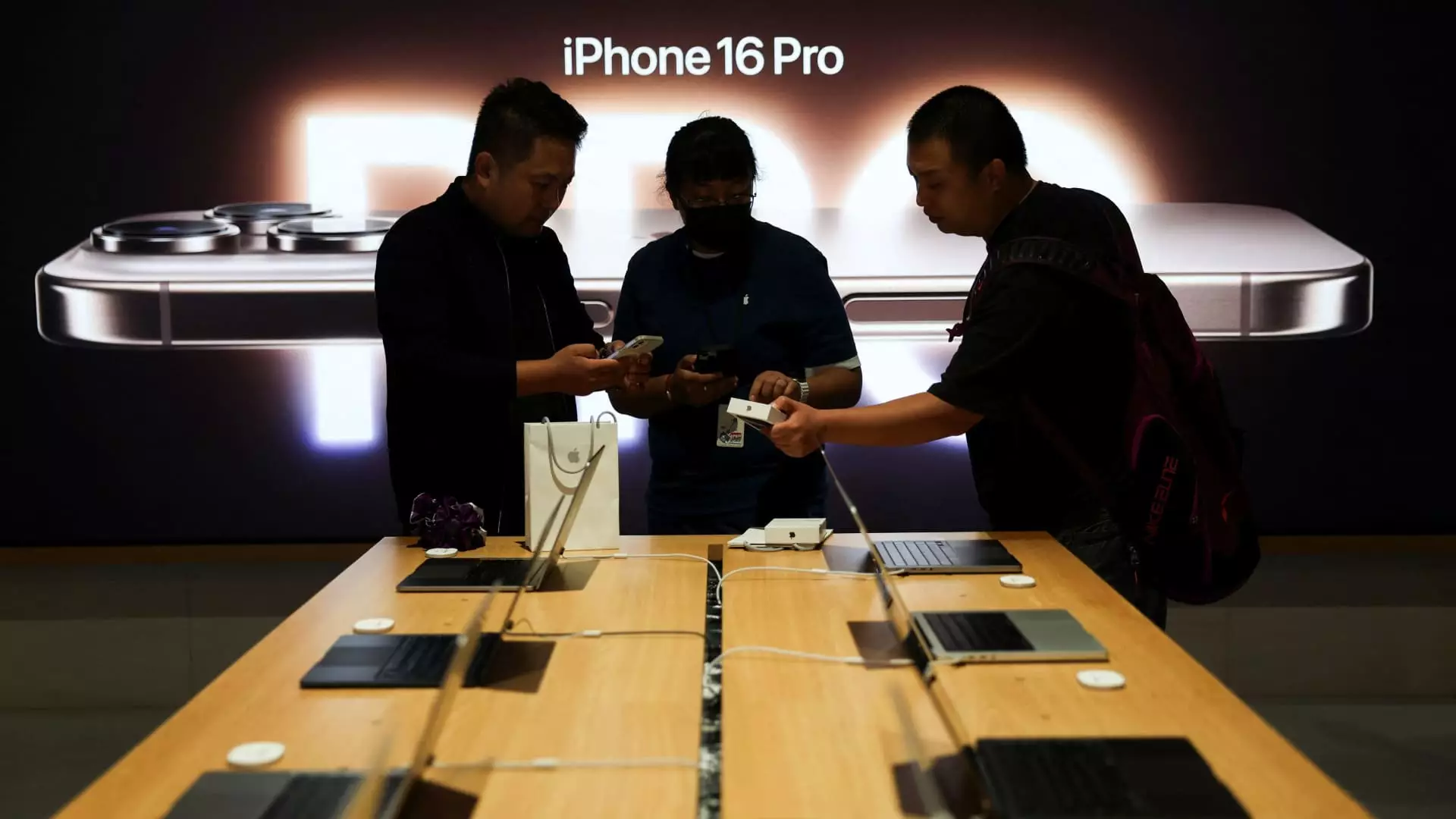The Resilience of Apple: A Deep Dive into Recent Market Perspectives

Despite experiencing mixed results in its latest quarterly report, Apple’s stock remains a focal point of interest for investors across Wall Street. The tech giant’s ability to outperform analyst estimates on both revenue and earnings is impressive, with net sales demonstrating a modest increase of 6% compared to the same quarter last year. CEO Tim Cook’s assessment of the latest iPhone sales reflects a robust demand, claiming that the current numbers have surpassed those of previous years, particularly the iPhone 14 and 15 series. It is vital to recognize that the iPhone, constituting nearly half of Apple’s revenue, is a critical component of the company’s overall performance.
However, one significant concern that analysts have highlighted is the company’s forecast for the upcoming December quarter, which anticipates “low to mid single-digit” sales growth. This projection falls short of the optimistic expectations that many had hoped for, creating apprehension among investors and leading to a slight dip in Apple’s stock, approximately 1%, post-announcement. This juxtaposition between strong quarter performance and a cautious outlook raises intriguing questions about the company’s trajectory in the near term.
A closer look at the perspectives from various major financial firms reveals a diverse array of opinions regarding Apple’s stock prospects. Goldman Sachs, for instance, continues to maintain a bullish stance with a “buy” rating and a price target of $286. Analyst Michael Ng argues that the market is overly concerned about slower growth in product revenues, overlooking the resilience and expansion potential of Apple’s broader ecosystem. Ng points out that Apple’s installed base is growing, bolstered by secular growth in its services division, and believes that innovation will ultimately mitigate any temporary downturns in iPhone demand.
On the other side of the spectrum, Morgan Stanley appears steadfast in its bullish outlook, reiterating its “overweight” rating with a price target of $273. Analyst Erik Woodring emphasizes the imminent device upgrade cycle that Apple is about to enter, driven in part by forthcoming advancements in Apple Intelligence. Woodring suggests that this transition could lead to unprecedented growth in sales and user acquisition, positioning Apple favorably amidst industry challenges.
Contrasting sharply with these bullish perspectives is UBS, which adopts a more cautious stance regarding Apple’s iPhone demand. The firm’s price target of $236 indicates a small upside potential of about 4%, reflecting a grounded attitude towards future sales. Analyst David Vogt notes that checks conducted by UBS do not point to significant increases in iPhone demand, even suggesting that recent features tied to on-device AI may not be resonating with consumers as hoped. This skepticism highlights the challenges Apple faces in convincing its user base about the value of incremental enhancements versus more substantial changes.
Meanwhile, Bank of America echoes a similar sentiment, maintaining its price target at $256, reflecting about 13% upside potential. Analyst Wamsi Mohan’s observations on the staggered launch of new features through Apple Intelligence indicate a strategic pivot from traditional product releases to a more dynamic refresh cycle. This approach may suggest that Apple aims to foster longer-term user engagement instead of rapid sales spikes, creating a unique relationship with its consumers.
The Future of Apple: Balancing Innovation and Demand
Apple’s mixed quarterly results paint a vivid picture of both potential and caution. While the company thrives through its innovative ecosystem and unwavering brand loyalty, the market’s apprehension about future sales forecasts signifies a pivotal moment for its leadership. Investors are now tasked with gauging whether Apple’s plans for innovation and product launches will effectively translate to sustained growth amid changing consumer dynamics and economic conditions. The next financial quarter will be instrumental in either reaffirming confidence in Apple’s strategies or necessitating a reevaluation of its market position. As such, stakeholders should remain vigilant and adaptive, continually reassessing Apple’s promises against its consumer responses.





